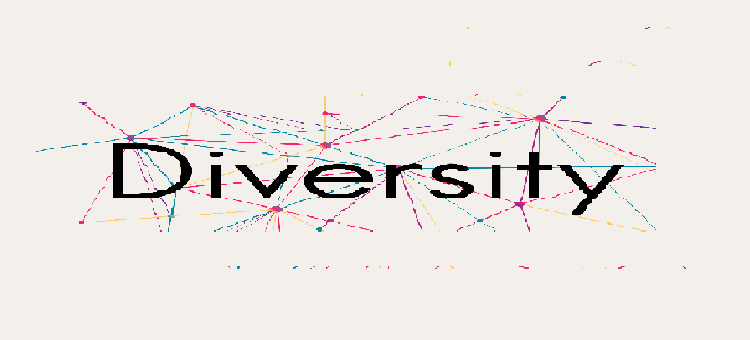Intersectionality in Academia: Dealing with diverse perspectives

What Is Intersectionality in Academia?
Intersectionality in academia refers to the recognition and study of the interconnected nature of various social identities and forms of oppression that individuals may experience within the academic context. Coined by American civil rights advocate and leading scholar of critical race theory, Kimberlé Crenshaw in 1989, the concept of intersectionality highlights that individuals possess multiple social identities, such as race, gender, class, sexuality, disability, and more, which intersect and interact to shape their unique experiences and access to opportunities.
In the context of academia, intersectionality acknowledges that individuals may face unique challenges and advantages due to the convergence of their intersecting identities. For example, a woman of color may experience discrimination or marginalization based on both her race and gender, resulting in a different set of barriers compared to a white woman or a man of color.
Importance of Understanding and Addressing Intersectionality in Academia
Understanding intersectionality in academia involves recognizing that an individual’s experiences, achievements, and opportunities are influenced by various factors beyond a single dimension of identity. These factors can include systemic discrimination, unconscious biases, institutional practices, and cultural norms that intersect and compound, impacting the educational experiences and trajectories of individuals.
Likewise, addressing intersectionality in academia is of great importance as it recognizes and acknowledges the complexities of individuals’ identities and experiences. Intersectionality is a framework that considers how various social categories, such as race, gender, ethnicity, class, sexuality, disability, and more, intersect and interact to shape a person’s unique lived experiences and access to opportunities. By taking an intersectional approach, academia can become more inclusive, equitable, and better equipped to address the diverse challenges faced by students, faculty, and researchers.
Key Reasons Why Addressing Intersectionality in Academia Is Crucial
Recognizing Diversity Within Diversity
Intersectionality highlights that people’s experiences are not defined by a single aspect of their identity. It acknowledges the diversity within marginalized groups and how overlapping identities can create unique and often compounded forms of discrimination and disadvantage. By recognizing these complexities, academia can develop more targeted and effective support systems to address the needs of individuals from diverse backgrounds.
Promoting Inclusivity
An intersectional approach challenges the “one-size-fits-all” solutions and ensures that academic institutions actively consider the diverse needs and perspectives of their students, faculty, and staff. This inclusivity fosters a sense of belonging and empowerment for all members of the academic community, leading to increased engagement and academic success.
Addressing Systemic Inequalities
Intersectionality sheds light on the interconnected nature of various forms of discrimination and oppression. By addressing the root causes of multiple oppressions, academia can work towards dismantling systemic inequalities that persist in education and research environments.
Fostering Critical Thinking and Intellectual Growth
Encouraging an intersectional perspective challenges students and scholars to critically examine the intersections of power, privilege, and oppression. This fosters intellectual growth and encourages a deeper understanding of societal complexities.
Creating Inclusive Curricula
Academia has an opportunity to incorporate diverse perspectives into curricula across disciplines. By including authors, researchers, and voices from diverse backgrounds, educational institutions can create a more inclusive and well-rounded learning experience for all students.
Attracting and Retaining Diverse Talent
Addressing intersectionality in academia is essential for attracting and retaining diverse talent among both students and faculty. Institutions that actively promote diversity and inclusivity are more likely to be seen as welcoming spaces for individuals from underrepresented backgrounds.
Preparing for a Diverse World
As the world becomes increasingly diverse, graduates need to be equipped with the skills to navigate and engage with people from various backgrounds. An intersectional approach to education prepares students to be more culturally competent and better equipped to contribute positively to a globalized society.
It is not just a matter of inclusivity and representation; it is a fundamental step towards creating a more equitable and socially responsible educational environment. Embracing an intersectional approach can lead to a more inclusive, supportive, and enriching academic experience for all members of the academic community and promote the advancement of knowledge and understanding in a diverse and interconnected world.
Challenges of Intersectionality in Academia
While addressing intersectionality in academia is crucial, it comes with its own set of challenges. These challenges can stem from institutional, cultural, and individual factors, and they may vary across different academic disciplines and geographic regions. Here are some of the main challenges:
Tokenism and Surface-level Diversity
Academic institutions may face the risk of tokenism, where they superficially promote diversity without genuinely addressing the underlying issues. This can lead to underrepresented groups feeling isolated or marginalized, as their perspectives and experiences might not be fully integrated into the academic environment.
Resistance to Change
Implementing intersectional approaches in academia may face resistance from traditional norms and practices. Some stakeholders might be resistant to altering existing structures and curricula, hindering progress towards more inclusive and diverse academic spaces.
Inadequate Support Systems
Students and faculty from underrepresented backgrounds may encounter limited support systems, such as mentoring, networking, and resources, necessary to navigate the challenges they face in academia. This lack of support can lead to a higher attrition rate among diverse talent.
Microaggressions and Bias
Academic environments may unknowingly perpetuate microaggressions and implicit biases, which can create hostile or unwelcoming climates for individuals with intersecting marginalized identities. These experiences can impact mental health, self-esteem, and academic performance.
Lack of Representation in Faculty
Diverse faculty members can act as role models and mentors for students from similar backgrounds. However, there is often a lack of representation among faculty, which can contribute to a sense of isolation for underrepresented students and may hinder faculty retention efforts.
Data Collection and Reporting
Accurate data collection and reporting on intersectional diversity can be challenging. Without comprehensive data, it becomes difficult for institutions to understand the extent of disparities and identify areas that require improvement.
Limited Intersectional Research
Intersectionality is increasingly recognized as a critical framework. Furthermore, there is still a lack of research that specifically examines the intersectional experiences of individuals in academia. Development of evidence-based policies and practices require more research.
Equity vs. Equality
Striving for equity in academia means recognizing that different individuals may require different levels of support to achieve the same outcomes. However, achieving equity can be challenging when institutions prioritize an equal distribution of resources, which may not address the unique needs of marginalized groups.
Lack of Inclusive Curricula
Academic curricula might not adequately incorporate diverse perspectives and experiences, leading to a limited representation of knowledge and a one-sided narrative. This can result in a narrow and biased understanding of various subjects.
Intersectionality as an Afterthought
In some cases, institutions may treat intersectionality as an afterthought rather than an integral aspect of their policies and practices. It is essential to prioritize intersectionality from the initial stages of planning and decision-making.
Addressing these challenges requires a multifaceted approach involving the commitment of academic institutions, faculty, administrators, students, and policymakers. Implementing training and workshops on diversity, equity, and inclusion can raise awareness of intersectionality and its importance. Creating and supporting affinity groups and resource centers can provide safe spaces and resources for underrepresented communities. Moreover, fostering a culture of open dialogue and inclusion can contribute to an environment where diverse voices are valued and amplified. Share your thoughts in the comments section below or write a full-length opinion and submit on Enago Academy Open Platform.









